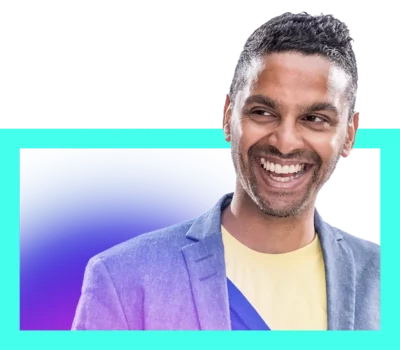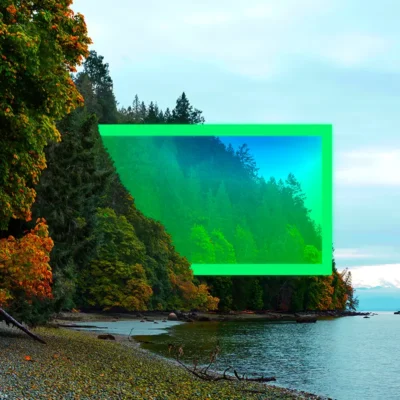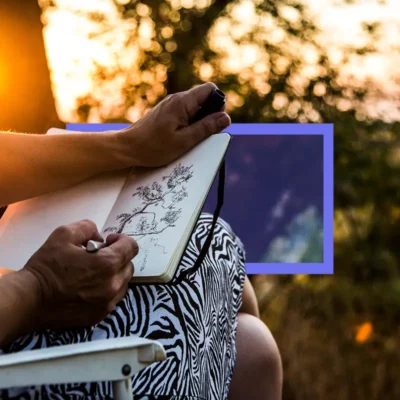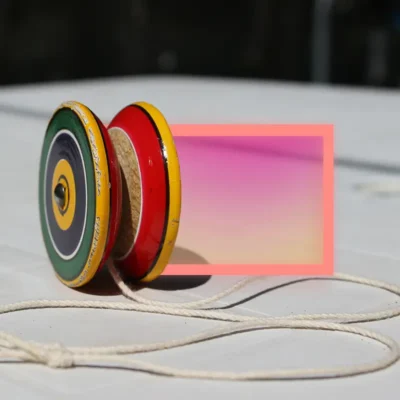Trust the world to show its goodness
Shea Hembrey is 5 years old, walking along the road to his farmhouse on the edge of the Mississippi River Delta, where the floodplains meet the Ozark Mountain foothills. The undulating hills surrounded by dense rows of oak, sassafras, sugarberry, and persimmon trees. He spots a pale, smooth-polished fleck: an egg! “This is a baby bird,” he tells his parents. “And I’m going to hatch it.” From that point forward, his willingness to be patient – to let what is already there reveal itself – opens up the world to show its goodness. We all possess this kind of wonderful intuition, but you must pay attention to that knowing feeling and start to trust it.
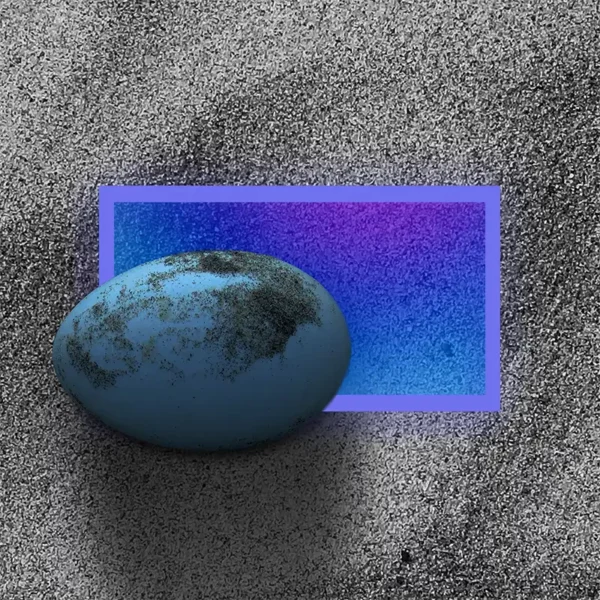
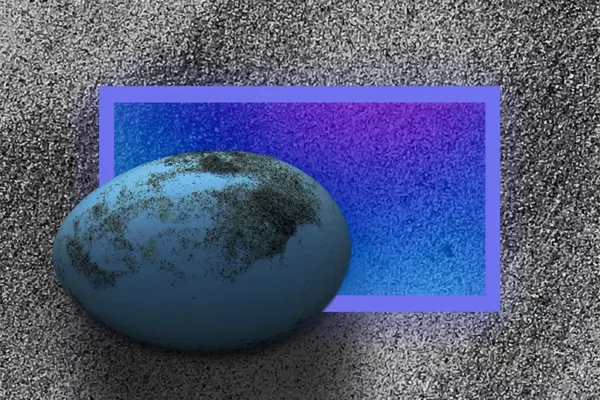
Table of Contents:
Transcript:
Trust the world to show its goodness
SHEA HEMBREY: On a high hill in the center of the farm sits my grandparent’s white wooden farmhouse, nestled beneath tall pecan and loblolly pine trees. The humid air smells alive year-round with constant notes of green and soil floating on the breeze. Birdsong is also constant year-round. Its intensity is quadruple on warm nights with frogs, cicadas, and crickets joining in. It’s a very alive place. Dig in the soil, anywhere, and you’ll find something.
ROHAN GUNATILLAKE: Shea Hembrey is a conceptual artist and TED speaker. And when I watched his TED Talk from a few years ago, I was in no way ready for it. In the talk, Shea starts by speaking about the art biennial he organizes, called “SEEK,” showing the work of 100 different artists. But the twist is he isn’t the curator, he is everything. Each of the artists, a creation of his imagination. And the hundred radically different pieces? His.
The audacity of this blows my mind. The Meditative Story Shea shares here is from an earlier time, a time when Shea learns the power of observation, and how careful looking, when combined with patience, can really open-up the world. It’s when he learns how art works.
In this series, we blend immersive, first-person stories with mindfulness prompts to give you a deep sense of wellbeing at any time of the day. From WaitWhat and Thrive Global, this is Meditative Story. I’m Rohan, and I’ll be your guide.
The body relaxed. The body breathing. Your senses open. Your mind open. Meeting the world.
HEMBREY: The soil beneath my feet in rural Arkansas is sandy loam. The sand and the silt feel soft to my feet. The sand and the silt feel soft to my feet. Finer particles than beach sand, it gets airborne when dry and windy, and dunes pile up on the sides of the dirt roads that lead me home.
I’m five years old, walking along the road to my farmhouse. Out of the corner of my eye I see a pale, smooth-polished fleck calling my attention atop the mound of sand. I head over and find a beautiful pale, bluish egg. It must have fallen out of its nest. And laying there on top of one of the dunes for who knows how long. I know immediately it’s a turtle dove egg. Turtle doves are known for making horrible nests, things are always falling out of them.
Luckily, the egg is not cracked. I pick it up and feel its smooth, delicate surface. It feels fast and urgent. I press its shell, warmed by the sun, to my ear and listen. There’s life in this egg! I carefully carry it home, this small treasure in my five-year-old hands.
“This is a baby bird,” I tell my parents. “And I’m going to hatch it.”
I am sure of this thing. I know it will hatch.
“Sure, fine,” they say.
For the next three days, I carry that little egg with me everywhere. At night, I wrap it with washcloth and put it in the warmth of the lamp by my bed. When I awake, I scoop up the egg again and begin the daily task of carrying it. I hear the baby bird in there – even when everyone else puts their ears close to the egg and tells me, “There’s nothing in there.”
A few days later, the egg does hatch. The flakes of shell spill onto my tiny hands. My parents freak out, and they didn’t really believe it was going to hatch. A new creature has arrived.
GUNATILLAKE: Let’s stay here in this scene, in this moment. Notice the delight of young Shea, brimming with the birth. Notice the resistance of Shea’s parents. And notice which reaction you lean towards.
HEMBREY: I have a quiet confidence that something is inside. I know, eventually, it will reveal itself. I think this is the little creator in me – always there all along, always looking and listening for what lies beneath.
It takes me a long time to ever say, “I am an artist.” It’s a bit like saying I’m an alchemist. Where I grow up, it’s hard to understand why anyone would ever claim something like that. It seems fanciful and unnecessary and my lot are practical, hard-working people.
My family is blue-collar and rural. I grow up on a farm that we’ve owned for 170 years on my mother’s side. My grandmother is the youngest of 14 daughters and she proudly keeps the farm in the family.
Our farm is on the edge of the Mississippi River Delta, where the floodplains meet the Ozark Mountain foothills. The fields are low, undulating hills surrounded with dense fencerows of oak, sassafras, sugarberry, and persimmon trees.
On a high hill in the center of the farm sits my grandparent’s white wooden farmhouse, nestled beneath tall pecan and loblolly pine trees. The humid air smells alive year-round with constant notes of green and soil floating on the breeze. Birdsong is also constant year-round. Its intensity is quadruple on warm nights with frogs, cicadas, and crickets joining in. It’s a very alive place. Dig in the soil, anywhere, and you’ll find something: if not a pottery shard, then a slumbering toad or a tangle of earthworms.
In my small community, you either work in the factory or you work the land. I’m 20 before I ever go to an art museum. Growing up I’m not around art in any kind of formal way, but everyone crafts with their hands. We make seed paintings, quilts, and macramé. We all use our hands, and we are all creators – even if we don’t see it.
I yearn to be home on the farm, doing my own thing: Building things. Creating things. Working with my hands. We grow our own vegetables; we hunt and trap our meat; we catch our fish. I come home every day from school and chop wood. We don’t hire a plumber. We don’t hire an electrician. We don’t hire anyone to build anything. We do it ourselves. I gain my confidence in “doing” things myself.
I’m not the kind of kid who plays games with others. I prefer to be alone. My cousins come over to play baseball in our newly-plowed fields. I hear their laughter and cheers, but I’m not really interested in playing – I enjoy sitting and watching.
I’m always in search of different perspectives, to observe whatever is around me. I climb the mulberry tree, then crawl onto the roof of my grandparent’s farmhouse with pencils and paper. I sit patiently, observing. I focus on the space between every distinct little object as I draw. I want to understand the movements of leaves on the tops of trees, how the distance between them grows then lessens. I want to understand change. I want to understand time. I want to understand everything.
One day, I find an abandoned telephone pole, it’s weather-worn. I run back to the farmhouse to grab a shovel, hop on my three-wheeler, and drive back to it. I strap the pole to the back of my ATV and drag it to the middle of a field.
I start digging. The soil is sandy, so I know the hole has to be deep, until I am well beneath the clay layer, down to where the water begins to seep. I dig until I’m finally able to lift the pole into the ground and fill in the gaps with the cool, excavated dirt.
I get a ladder and start to climb up. My heart is in my throat with anticipation. I can anticipate this knowing-feeling, that the world will reveal something new to me from the top of this pole.
I’m hungry to see things from different perspectives, and so I constantly uproot the pole and plant it somewhere else. I want to see the world from all of its angles. From up here, I get to watch like a slow-hovering hawk. The flow of the wind through the grasses is revealed differently from this point of view. It moves in more orderly patterns from up here, like the patterns dancing on the surface of the river.
As I stroll through the fields, I sometimes stop to dig a hole in the ground, and line it with grass. I create a nest for myself and sit quietly inside of it, peering out to observe the world at ground level. I notice a piece of straw; it’s like a ray of sunshine condensed into a singular line. I stare through blades of grass for hours, drinking in their structures, seams, and textures. I have sunken into the group and no one can see me. Curled up, I see the world from the point of view of a tiny, grounded creature.
GUNATILLAKE: Sit with Shea here in this hole. Look out over the field at eye level just as he is. Each blade of grass, moving in the breeze. Notice. Take a deep breath. Hold it. Release and stay in this moment.
HEMBREY: Each time I settle into a place to observe, I simply wait, watch – and then I create, drawing what is revealed to me. I can’t get enough. I know the most ordinary things eventually reveal something extraordinary in a shift in perspective, I just have to look.
As a boy, I especially love birds. I climb trees and sit by the pond and watch a flock of ducks for hours. In the golden, slanted light of autumn, I watch them dive through the crisp air and float on the cold water, moving with ease through the elements. I am captivated. The same birds may look exactly the same to everyone else, but not to me. I watch them through the seasons. I watch their mating displays. I watch them raising their young. I sit there and stare, and stare, and stare. Each one is so different, and I name them – each and every one. I am just so in love.
This is how my appreciation for art evolves. As I look deeply, I learn to wait for something to reveal itself to me. I learn to wait for the magic.
I constantly ask myself: How can I slow down the viewer? How can I tempt them to stay a few seconds longer? How do I coax the magic to emerge from these materials? How can I trigger a viewer to recognize the magic that this object has inside of it?
I’ve inherited patience from my grandfather Theodore, who everyone calls “Thid.” As Thid grows up, home for him and his father is here and there, all over the American South, wherever they find work. They rely on the generosity of strangers with room to spare. This means many days and nights of uncertainty. These experiences mold my grandfather into a wandering spirit who trusts the world to show its goodness to him. For him, it’s that simple.
Growing up, my grandfather takes me “visiting” with him. That’s what we call it when you just visit someone’s house to keep them company for a little while. You never call ahead, you just show up for a slow conversation. People expect visits, and make extra food just in case. Together, we visit the people who need visiting.
We visit Rudolph Pretty, the local drunk with the bright red nose, that’s how he got this name. We walk up to his wooden shack and you can see through the slats of wood that make up the walls of his home.
Rudolph makes me bologna sandwiches and gives me iced tea in a dirty mason jar. He passes me the meal with dirt-covered hands and my grandfather looks at me as if to say, “Eat the sandwich.” Be very thankful. Be very respectful. I eat the dirty sandwich, drink the dirty tea, and remain very patient as we sit there and visit.
My grandfather talks very little, and he talks very, very slowly; he deliberates… he tastes each word in his mouth before it comes out. When he chooses to tell a story it may take several sittings. We get to a point when I have to leave and run back home, so he pauses… and then when I see him the next day, he picks up mid-sentence, right where he left off.
To me, my grandfather is the most powerful person in the world. He is tender and possesses quiet confidence. He has this gentleness that is always present, always there. He is a big log of a man. Both impenetrable but also equally soft. I think he changes everything about how I exist in the world, how to be tender and patient with the person right in front of me. To be as present and mindful I can be as they tell me their stories.
I think we desperately need people who are shaping the world with tenderness. We need it as much as we need slower interactions.
When I’m nine, I get into collecting bantams, miniature chickens. My grandfather gets into it with me. I scour the state paper and discover there is one breed we’ve been looking for, the Golden Sebright, just a couple counties over from us. My grandfather insists that we just drive there, not even knowing where the people live. “We’ll find them when we get over there,” he tells me.
At one point, we stop at a gas station and I look a long time through the phonebook for their address. He stops me and tells me, “We’ve done this for too long.” We just need to start driving to find these chickens. To me, this is crazy – but we get in the pickup and go.
We start driving, winding through backroads as if these chickens are going to show up out of nowhere. I sit there smiling as we drive, because logically this trip doesn’t make any sense.
Eventually we pass a farm and I yell, “Stop!” Those are Golden Sebright Bantams in the backyard! I am dumbfounded, we actually found them! We go knock on the front door, a man swings it open. He saw the advertisement and had bought the birds the previous day. And so we’ve found the people who bought the birds, not the original seller who placed the ad. I’m mystified. “How did we find these birds?” But it hits me: it’s always this way when I’m with him. Being with him, I am in the center of a crazy magical realism. A faith. A confidence.
When you’re on the right path, the universe tells you. The world becomes filled with synchronicities. And you must still yourself and learn to listen. This feeling of “just knowing” is what I eventually inherit from him.
Over time I learn that art has power in three ways: There’s power for the maker, the power for the viewer, and a living power in the object itself.
If you can see the living power in the object itself, then things start to reveal themselves to you. I think the universe wants to be seen, because seeing is a form of loving. The universe wants to be acknowledged and loved in a way where you’re not trying to manipulate or change anything. You are just standing there, with your caressing eyes, admiring and appreciating something as it opens itself to you.
That’s what I believe about my work: something is always revealed if you have the time and patience to slow down and wait. I sit in front of a blank sheet of paper and say, “Okay, I’m here. Reveal yourself to me.”
I think we all possess this kind of wonderful intuition – but you must pay attention to that knowing feeling and start to trust it. Allow it to take form. Lean into it.
Like the baby bird inside the egg, just waiting for the right time to hatch out, something is always revealed when you approach it with tenderness, and the willingness to wait patiently.
Rohan’s closing meditation
GUNATILLAKE: When Shea talks about learning the ways of looking that lead to him becoming an artist, I hear someone who natively understands mindfulness. It reminds me of an old story from Buddhist mythology in which the young man who would go onto become the Buddha, is watching nature around him while sitting in a field, much like Shea, and naturally slips into a deep state of meditation.
Many of Shea’s words held such great wisdom but the ones I want to jump off from are these: “Something is always revealed if you have the patience to slow down and wait, stand in front of a blank canvas and say, ‘Okay, I’m here. Reveal yourself to me.’”
So let’s choose a canvas. And recollecting the moment where Shea’s little bird appears in his hands, let’s choose our hands. Just for these few minutes, and if it’s safe to do so, making our hands the most important thing in the world. Drop all your awareness into the sensations of the hands: the sensations of the skin meeting the air, the muscles with their tension and their relaxation. Letting your hands be the piece of nature, the artwork that you observe. Resting your mind here, and bringing it back when it slips away. Saying “Okay, I’m here. Reveal yourself to me.”
Nothing much might be happening – that’s ok. This is a practice of patience, of resting, with body relaxed, resting the mind in one place; of sitting by the pond and watching the ducks.
And letting whatever is revealed be revealed.
What is revealed? With the mind that tiny bit quieter now, what new sensations are here to be felt in your hands? Is there energy or tingling? Is there heat or coolness? With the attention that tiny bit more subtle, can you notice anything a bit more subtle? The sensitivity of what you can be aware of in step with the sensitivity of the awareness itself.
And now letting the attention, the awareness, the mind roam free and getting interested in what else is here to be revealed.
Waiting.
Waiting.
Watching.
The magical moments of life like that baby bird, appear when they appear. We just have to wait and make sure we are awake and aware enough to be there for them. Thanks, Shea. And thank you.
